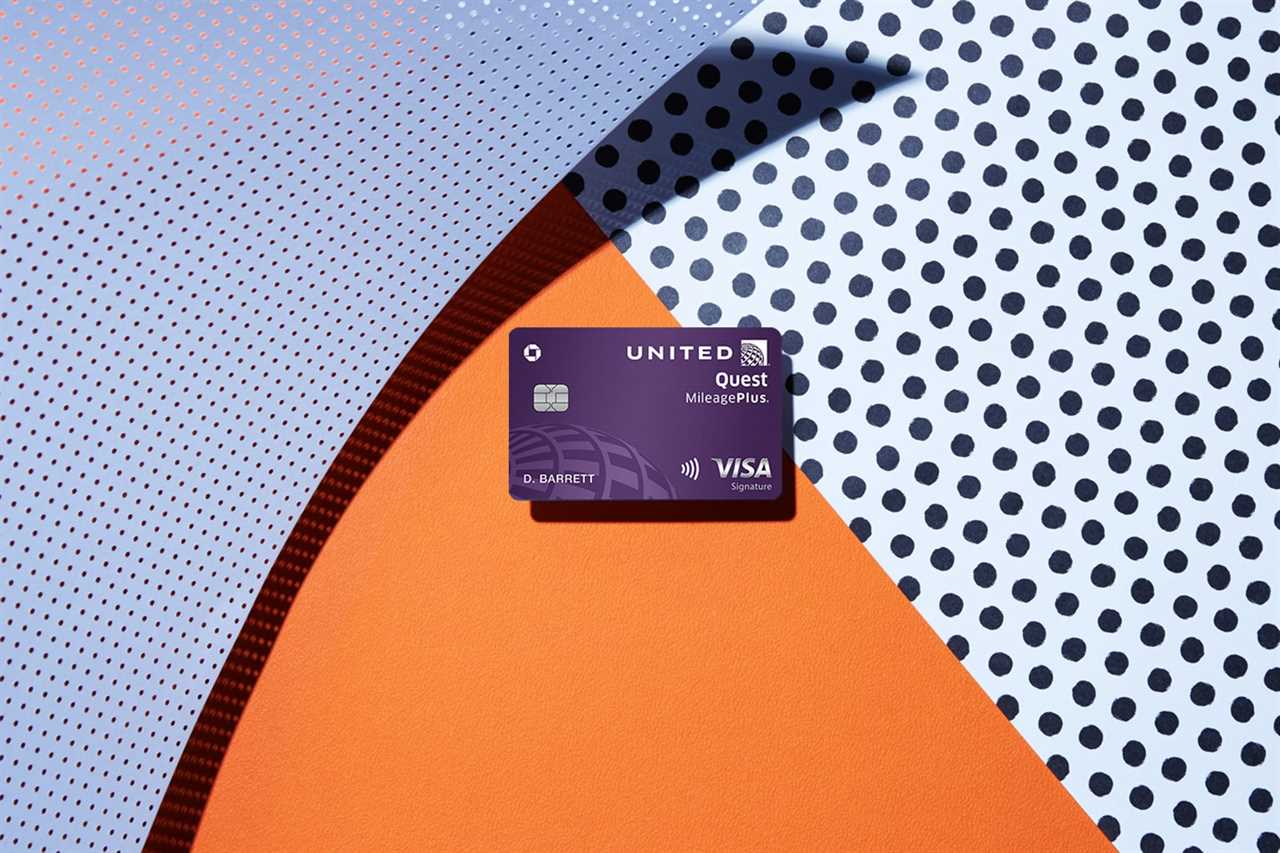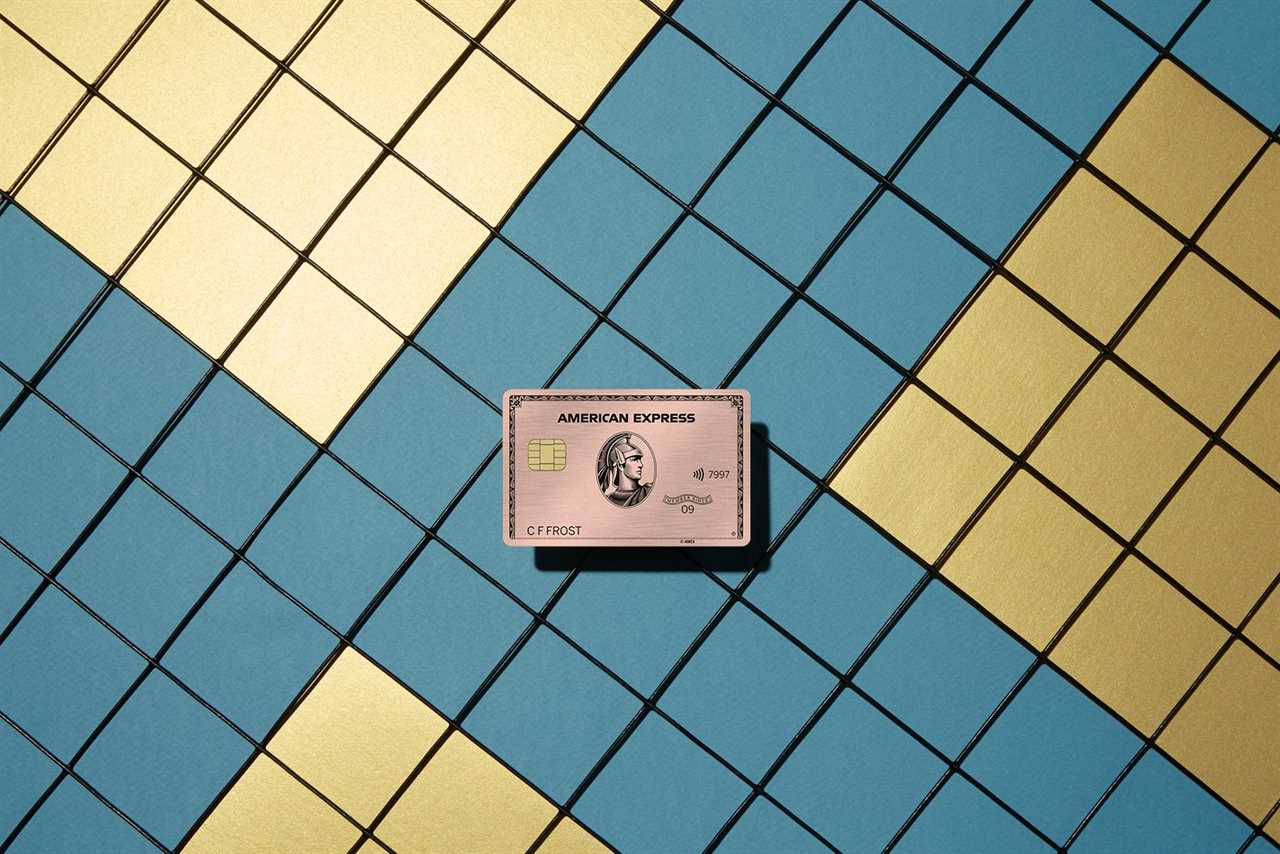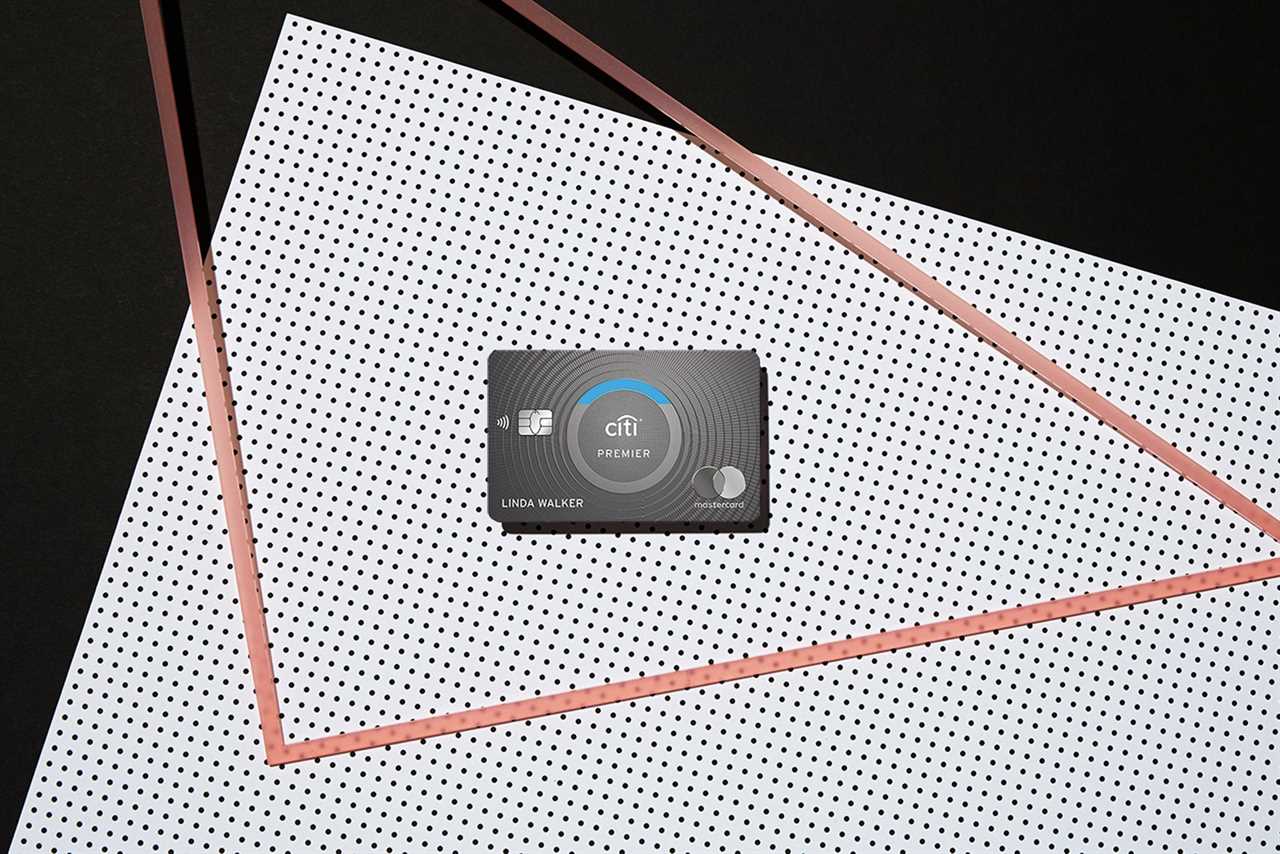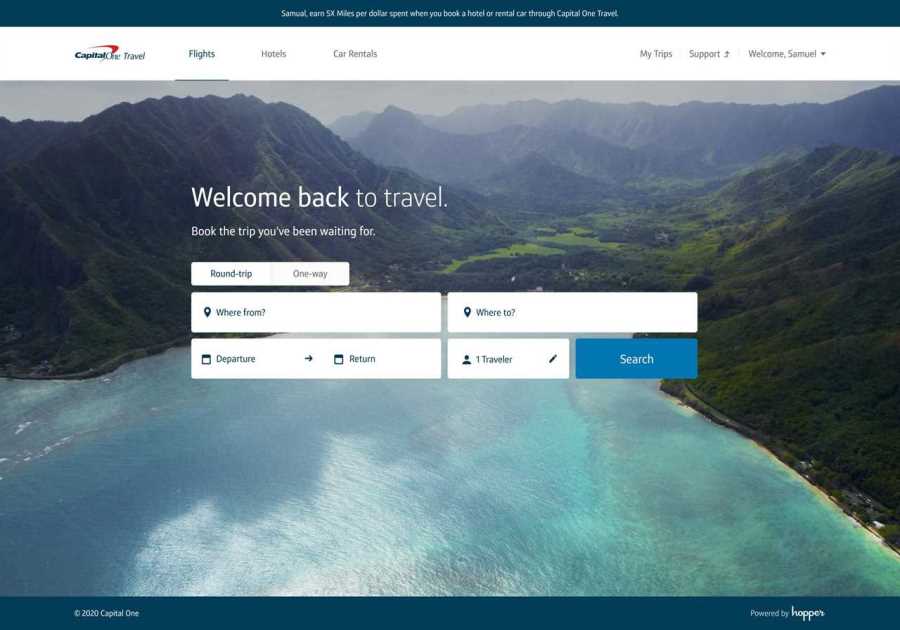HOSTED BY: 1 AIR TRAVEL
If you’ve spent any time around TPG, you know that the Chase Sapphire Preferred Card is one of our most beloved cards. We often recommend it as a great travel rewards card for beginners and travel rewards veterans alike for its solid earning potential, excellent point redemption options and relatively low annual fee.
We love the card so much, in fact, that it made multiple appearances on our list of cards TPG staffers can’t live without.
If (for some reason) you haven’t gotten it yet, make that your next move.
Official application link: Chase Sapphire Preferred Card
But if you’ve already listened to us and gotten the Chase Sapphire Preferred, your next card decision might seem more daunting. If you ask a few of us which card you should get next, you’re likely to hear some different answers. It can feel like choosing your next card is really complicated when, in reality, there are just a lot of really good options of cards you can get to take you to the next phase of your points and miles journey.
Today we’re going to break down the three major schools of thought on which card you should get to pair with your trusty Chase Sapphire Preferred.
In This Post
Three approaches
Your options really fall into three categories. You’ll want to get one of these:
A card that earns Chase Ultimate Rewards points.A card that earns points or miles for your favorite Chase transfer partner.A card that earns a different set of transferable points.There’s no single right answer that applies to everyone, so you’ll want to consider your own situation to identify which makes the most sense.
Related: The power of the Chase Trifecta
Option 1: A card to earn additional Ultimate Rewards points
This is a great choice if you love the options you have to redeem and transfer the Chase Ultimate Rewards points from your Sapphire Preferred. With one of the Chase Freedom cards, you can maximize your spending categories to earn even more of these points from your everyday spending.
On their own, the Chase Freedom Unlimited and Chase Freedom Flex are marketed as cash-back cards. If you also have the Chase Sapphire Preferred, though, you’ll be able to combine your Chase Ultimate Rewards points and transfer them to the full range of Chase transfer partners.
Chase Freedom Unlimited
WYATT SMITH/THE POINTS GUY
Annual fee: $0.
Sign-up bonus: Earn an extra 1.5% on all purchases up to $20,000 spent in your first year.
Rewards rate: Earn 5% on travel booked through the Ultimate Rewards portal, 3% on dining and drugstores, and an unlimited 1.5% on all other purchases.
Why this card pairs well: This card is excellent to pair with your Chase Sapphire Preferred because it earns 1.5% (or points per dollar spent) on all purchases, which is 50% more than the Chase Sapphire Preferred (1 point per dollar spent on purchases outside of its bonus categories).
Even with my own more advanced card portfolio, this is a card I reach for often. It allows me to earn a decent return on purchases that don’t fall under most bonus categories, such as auto repairs and specialty items. With a current bonus of earning an additional 1.5% back on all purchases (up to $20,000 spent) in your first year, it’s a no-brainer for most Chase Sapphire Preferred cardholders.
Related: Chase Freedom Unlimited: A great card for beginners and pros alike
Official application link: Chase Freedom Unlimited
Chase Freedom Flex
Annual fee: $0.
Sign-up bonus: Earn $200 cash back after you spend $500 on purchases in the first three months from account opening.
Rewards rate: 5% (or 5 points per dollar) cash back on up to $1,500 in combined purchases in bonus categories each quarter you activate. You’ll also get 5% cash back on travel purchased through Chase Ultimate Rewards®, 3% cash back on drugstore purchases and dining, and 1% cash back on all other purchases.
Why this card pairs well: With this card, you’ll get 5 points per dollar on qualifying purchases in merchant categories and at specific retailers that change each quarter. For example, during the fourth quarter of 2022 (Oct. 1 through Dec. 31, 2022), the bonus applies to Walmart and PayPal purchases — perfect timing for your upcoming holiday purchases. This card gives you a great way to earn more Chase Ultimate Rewards points on different spending categories.
Related: Chase’s newest cash-back option — Chase Freedom Flex card review
Official application link: Chase Freedom Flex℠
If you find yourself ready to juggle a few cards but want to keep earning Chase Ultimate Rewards points, you can use all three cards (Sapphire Preferred, Freedom Unlimited and Freedom Flex) to maximize your points earning potential on all your purchases. Just be sure to time your applications carefully to maximize the chances of being approved.
Option 2: A card to earn additional points with a Chase transfer partner
If you find yourself consistently transferring your Chase Ultimate Rewards to a specific transfer partner, like United MileagePlus or World of Hyatt, you can get a cobranded card to maximize your points.
United Quest Card

JOHN GRIBBEN/THE POINTS GUY
Annual fee: $250.
Sign-up bonus: Earn 70,000 bonus miles after you spend $4,000 on purchases in the first three months your account is open.
Rewards rate: Earn 3 miles per dollar spent on United Airlines purchases (immediately after earning the $125 United purchase credit) and 2 miles per dollar on all other travel, including airfare, trains, local transit, cruise lines, hotels, car rentals, taxicabs, resorts, ride-sharing services and tolls. You’ll also earn 2 miles per dollar on dining and select streaming services and 1 mile per dollar on all other purchases.
Why this card pairs well: Since United is one of the most valuable Chase travel partners, this card will greatly improve the value you receive when you transfer your Ultimate Rewards points to United. For example, when you have a United Quest card, your miles will go much further due to the additional award availability offered to all United cardholders.
You’ll also receive a free first and second checked bag for yourself and a companion, priority boarding and access to Premier upgrades on award tickets. Other benefits include two 5,000-mile anniversary award flight credits, 25% back on United inflight purchases and up to a $100 Global Entry or TSA PreCheck fee credit. A $125 annual United purchase credit will take the sting out of this card’s $250 annual fee.
If you fly United regularly, the combination of the United Quest card and the Chase Sapphire Preferred offers a valuable amount of flexibility.
Related: 4 reasons to get the new United Quest Card
Official application link: United Quest Card
World of Hyatt Credit Card
Annual fee: $95.
Sign-up bonus: Earn up to 60,000 bonus points, including 30,000 points after you spend $3,000 on purchases within three months from account opening and another 30,000 points by earning 2 points per dollar on purchases that normally earn just 1 point per dollar in your account’s first six months (on up to $15,000 spent).
Rewards rate: Earn 4 points per dollar spent at Hyatt properties; 2 points per dollar at restaurants and on airline tickets purchased directly from the airline, local transit and commuting as well as fitness club and gym memberships; and 1 point per dollar on all other purchases.
Why this card pairs well: The World of Hyatt program is easily the most valuable hotel transfer partner offered by Ultimate Rewards, so you’ll want to enjoy as many perks as possible when redeeming your rewards for stays at Hyatt. You’ll receive Hyatt Discoverist status for as long as your account is open, as well as five qualifying night credits toward your next tier status every year. Plus, you can earn two additional qualifying night credits every time you spend $5,000 on your card, making it much easier to reach the next tier of elite status even if you’re not on the road constantly.
Another popular benefit on the card is the annual free night you receive after your cardmember anniversary (valid at any Category 1–4 Hyatt hotel or resort), as well as an additional free night at any Category 1–4 Hyatt hotel or resort if you spend $15,000 in a calendar year.
Related: The most award-friendly hotel program: Everything you need to know about World of Hyatt
Official application link: World of Hyatt Credit Card
Option 3: A card that diversifies your rewards
This is the one that opens the door to other options.
If you feel comfortable using your Chase Ultimate Rewards and want to unlock even more possibilities, you’ll want to open a card that will build you another set of transferable points. Here are some great choices:
merican Express® Gold Card
JOHN GRIBBEN/THE POINTS GUY
Annual fee: $250. (See rates & fees)
Welcome bonus: Earn 60,000 Membership Rewards points after spending $4,000 within six months of account opening. However, be sure to check the CardMatch Tool to see if you’re targeted for an even higher welcome offer (subject to change at any time).
Rewards rate: Earn 4 points per dollar spent on restaurants and 4 points per dollar spent at U.S. supermarkets (up to $25,000 per calendar year; then 1 point per dollar). Earn 3 points per dollar spent on flights booked directly with the airline or on Amex Travel and 1 point per dollar spent on all other purchases.
Why this card pairs well: The Sapphire Preferred doesn’t offer a grocery bonus, so this is an excellent card to use at U.S. supermarkets.
Most importantly, you diversify your rewards by having access to American Express Membership Rewards which includes unique transfer partners that Chase doesn’t have, such as Hilton Honors, Delta Air Lines, ANA, Hawaiian Airlines and Qantas. Other benefits include up to $120 in annual dining credits and up to $120 each year in Uber Cash that you can use toward Uber Eats purchases or Uber rides in the U.S.
Related: American Express Gold card review
Official application link: American Express® Gold Card
Capital One Venture Rewards Credit Card

The Capital One Venture card is packed with features and a solid welcome bonus. ERIC HELGAS/THE POINTS GUY
Annual fee: $95.
Sign-up bonus: Earn 75,000 bonus miles when you spend $4,000 on purchases in the first three months from account opening.
Rewards rate: Earn 2 miles per dollar spent on all purchases with no limits.
Why this card pairs well: The Sapphire Preferred has incredible transfer partners, but they can’t account for all travel purchases. However, the miles you earn from your Capital One Venture can be redeemed for statement credits toward nearly any travel purchase.
Capital One also offers you the ability to transfer your miles to a lengthy list of airline and hotel programs, which have little overlap with Chase’s partners. Valuable additions include Wyndham Rewards, Turkish Airlines, Qantas and Choice Privileges. However, you also have access to some shared transfer partners like British Airways and Avianca LifeMiles, so pairing the Venture with the Sapphire Preferred could accelerate your potential earnings with these programs.
This card also offers you up to $100 in Global Entry or TSA PreCheck fee credit.
Related: Capital One Venture Rewards credit card review
Official application link: Capital One Venture Rewards Credit Card
Citi Premier® Card

JOHN GRIBBEN/THE POINTS GUY
Annual fee: $95.
Sign-up bonus: Earn 80,000 bonus ThankYou points after you spend $4,000 in purchases within the first three months of account opening.
Rewards rate: Earn 3 ThankYou points per dollar spent at restaurants, supermarkets, gas stations, air travel and hotels, and 1 ThankYou point per dollar spent on all other purchases.
Why this card pairs well: The Citi ThankYou Rewards program offers several transfer partners that Chase doesn’t, such as Qatar, Etihad and Turkish. It also offers valuable bonus earning rates at supermarkets and gas stations, which the Sapphire Preferred doesn’t. This card also comes with a hotel savings benefit worth $100 off of a $500 single hotel stay (excluding taxes and fees), once each calendar year. However, that stay must be booked through Citi’s travel portal, limiting its utility to some extent.
Related: Sizable rewards, manageable annual fee: Citi Premier credit card review
Official application link: Citi Premier® Card
Bottom line
The Chase Sapphire Preferred Card is excellent on its own, but it’s even better when paired with other cards. Whether you want to focus on earning more Chase Ultimate Rewards points, build out your stash of points or miles with one of Chase’s transfer partners or diversify into another set of transferable points, you have great options available to you.
Remember, there is no wrong choice when choosing your next card. Regardless of which one you choose, you’ll build on the knowledge you’ve obtained through the Chase Sapphire Preferred and take another step toward paying for your next trip with points and miles.
Related: Why the Chase Sapphire Preferred should still be the first rewards card in your wallet
Additional reporting by Jason Steele.
For rates and fees of the Amex Gold Card please click here
Title: I have the Chase Sapphire Preferred. What card should I get next?
Sourced From: thepointsguy.com/news/best-card-to-pair-with-the-chase-sapphire-preferred/
Published Date: Thu, 29 Sep 2022 13:30:14 +0000






